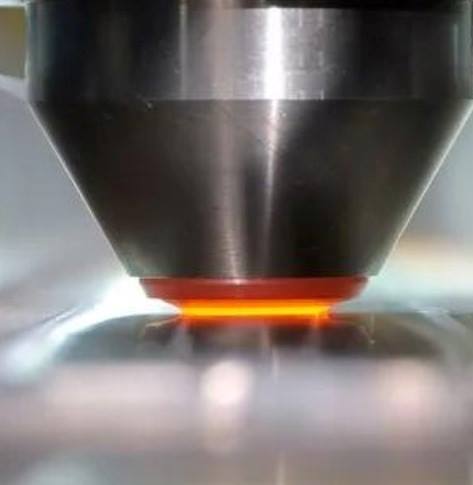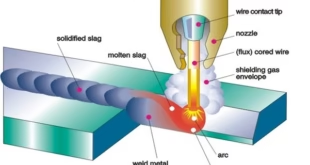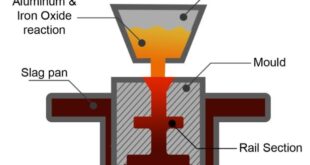Solid State Welding: Joining Metals with Precision and Strength
Introduction
Solid State Welding is a cutting-edge technique that has revolutionized the field of metal joining. This process offers exceptional precision, strength, and durability in creating bonds between metals. Unlike traditional welding methods that involve melting the metals to be joined, Solid State Welding accomplishes the fusion without reaching the melting point. This article dives into the details of Solid State Welding, exploring its applications, benefits, and differences from conventional welding approaches.
Solid State Welding: A Deeper Look
Solid State Welding, also known as friction welding, is a non-fusion welding process that involves joining metals under elevated temperature and pressure, without achieving their melting points. The process occurs in the solid state, ensuring minimal distortion, reduced heat-affected zones, and superior mechanical properties in the welded joint. This method encompasses various sub-techniques, each with its unique advantages and applications.

Understanding the Types of Solid State Welding
Friction Stir Welding (FSW)
Friction Stir Welding involves a rotating tool that generates frictional heat and plasticizes the metals’ interface, followed by mechanical agitation to create a seamless bond. This technique is commonly used in aerospace, automotive, and shipbuilding industries, producing joints with exceptional mechanical properties and uniform microstructures.
Ultrasonic Welding
Ultrasonic Welding employs high-frequency vibrations to create friction between metal surfaces, generating heat that leads to plastic deformation and subsequent bonding. This technique finds applications in the electronics industry, particularly for joining thin wires and components.
Diffusion Bonding
Diffusion Bonding relies on applying heat and pressure to bring metal surfaces into close contact, allowing atomic diffusion to occur. This process is ideal for materials with similar crystal structures, such as titanium alloys and superalloys.
Roll Welding
Roll Welding involves rotating one of the workpieces while applying axial pressure to create a welded joint. It is commonly used in the production of tubes, pipes, and cylindrical components.
Explosion Welding
Explosion Welding utilizes controlled explosive forces to join metals together. The impact generates enough heat and pressure to create a strong metallurgical bond between the materials. This technique is suitable for joining dissimilar metals.
Benefits of Solid State Welding
Solid State Welding offers a plethora of advantages compared to traditional fusion welding methods:
- Superior Strength: Since the process occurs in the solid state, the resulting joints exhibit higher strength and mechanical integrity.
- Minimal Distortion: The reduced heat input and localized heating lead to minimal distortion and warping of the workpieces.
- Enhanced Microstructure: The absence of a liquid phase during welding results in refined microstructures, improving the mechanical properties of the joint.
- No Filler Material: Solid State Welding eliminates the need for filler materials, reducing the risk of inclusions and defects in the joint.
- Less Heat-Affected Zone (HAZ): The process generates less heat, reducing the size of the heat-affected zone and preserving the base material’s properties.
Applications of Solid State Welding
Solid State Welding finds applications in a wide range of industries:
- Aerospace: Friction Stir Welding is used to create lightweight and durable joints in aircraft components, ensuring structural integrity.
- Automotive: Ultrasonic Welding is employed in the assembly of electronic components and battery packs in electric vehicles.
- Nuclear: Diffusion Bonding is used to join components in nuclear reactors, ensuring reliability and safety.
- Marine: Roll Welding is utilized in shipbuilding for creating watertight joints and connecting pipes.
- Oil and Gas: Explosion Welding is suitable for joining dissimilar metals in pipelines and other critical components.
Solid State Welding vs. Conventional Welding
Solid State Welding differs significantly from traditional welding methods:
- Heat Input: Solid State Welding involves lower heat input, resulting in minimal distortion and reduced HAZ.
- Mechanical Properties: The solid-state process yields superior mechanical properties due to the absence of a liquid phase.
- Speed: Solid State Welding is often faster than conventional methods, as it requires fewer steps.
- Material Compatibility: Solid State Welding allows the joining of dissimilar metals with ease.
- Environmentally Friendly: The process consumes less energy and produces fewer emissions compared to fusion welding.
FAQs
How does Solid State Welding work?
Solid State Welding involves joining metals without melting them. It utilizes heat and pressure to create bonds between the metals’ atoms, resulting in a strong and durable joint.
What are the advantages of Solid State Welding?
Solid State Welding offers benefits such as superior strength, minimal distortion, enhanced microstructure, no filler material requirement, and a reduced heat-affected zone.
Is Solid State Welding suitable for all materials?
While Solid State Welding is versatile, its applicability depends on the materials being joined. Metals with similar crystal structures tend to yield better results.
What industries benefit from Solid State Welding?
Aerospace, automotive, nuclear, marine, and oil and gas industries are among those that benefit from Solid State Welding due to its strength and precision.
How does Solid State Welding contribute to sustainability?
Solid State Welding consumes less energy and produces fewer emissions compared to traditional welding methods, making it more environmentally friendly.
Is Solid State Welding faster than conventional welding?
Yes, Solid State Welding is often faster due to its simplified process and reduced heat-related steps.
Conclusion
Solid State Welding has emerged as a game-changer in the field of metal joining, offering superior strength, precision, and efficiency. With its various techniques catering to different applications, this technology continues to transform industries by creating durable and reliable bonds between metals. As we witness the evolution of welding techniques, Solid State Welding stands as a testament to human innovation, bridging gaps with precision and ingenuity.
 Welding of Welders All about Welding and Welders
Welding of Welders All about Welding and Welders



